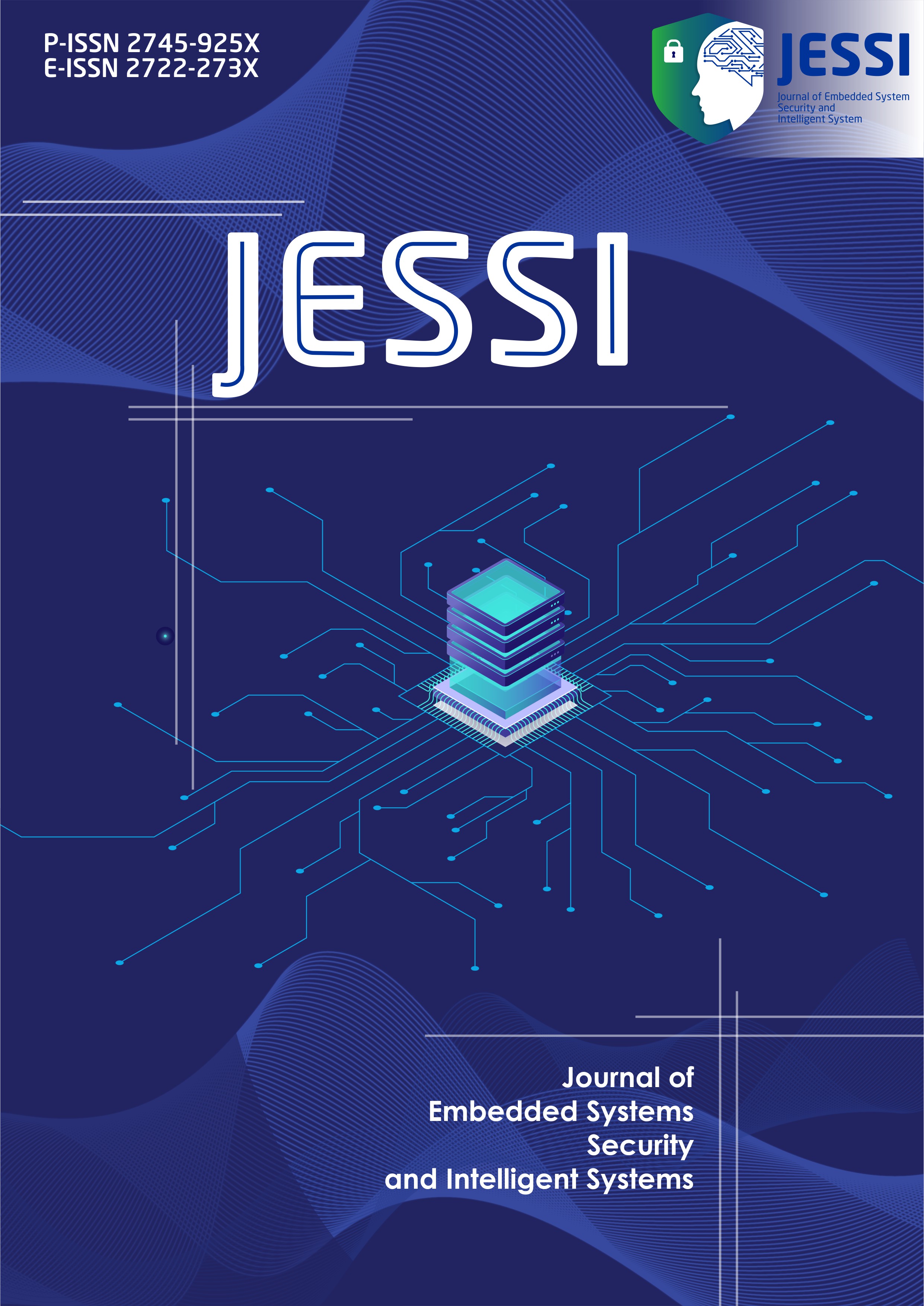Improved Traffic Forecasting in Transportation Systems Using Deep Learning Algorithms with Tuning Parameters
Keywords:
Accuracy, F1-Score, Classification, Random Forest , XGBoostAbstract
In this study, we evaluated the performance of two classification models, namely Random Forest and XGBoost, on a multi-class classification task. The evaluation results showed that both produced excellent accuracy, with XGBoost achieving an accuracy of 1.00 and Random Forest around 0.99. However, Random Forest requires special attention to improve recall in some classes. These results provide important insights in the selection of classification models that fit the needs of the task. In the context of multi-class classification tasks, model performance is highly relevant and needs to be carefully calculated.Downloads
References
N. Gao, Y. Hong, J. Chen, and C. Pang, “Regional expressway freight volume prediction algorithm based on meteorological information,” Promet - Traffic&transportation, vol. 35, no. 2, pp. 195–211.
A. Mitra, A. Jain, A. Kishore, and P. Kumar, “A comparative study of demand forecasting models for a multi-channel retail company: a novel hybrid machine learning approach,” Oper. Res. Forum, vol. 3, no. 4.
M. Kamyab, S. Remias, E. Najmi, S. Rabinia, and J. Waddell, “Machine learning approach to forecast work zone mobility using probe vehicle data,” Transp. Res. Rec. J. Transp. Res. Board, vol. 2674, no. 9, pp. 157–167.
J. Gan, L. Li, D. Zhang, Z. Yi, and Q. Xiang, “An alternative method for traffic accident severity prediction: using deep forests algorithm,” J. Adv. Transp., pp. 1–13.
D. Wang, Y. Hu, C. Zhan, Q. Zhang, Y. Wu, and T. Ai, “A nomogram based on radiomics signature and deep-learning signature for preoperative prediction of axillary lymph node metastasis in breast cancer,” Front. Oncol., vol. 12.
Z. Zhang, Y. Yuan, and X. Yang, “A hybrid machine learning approach for freeway traffic speed estimation,” Transp. Res. Rec. J. Transp. Res. Board, vol. 2674, no. 10, pp. 68–78.
Y. LeCun, Y. Bengio, and G. Hinton, “Deep learning,” Nature, vol. 521, no. 7553, pp. 436–444.
E. Cengil and A. Çinar, “Hybrid convolutional neural network based classification of bacterial, viral, and fungal diseases on tomato leaf images,” Concurr. Comput. Pract. Exp., vol. 34, no. 4.
C. Catal, G. Giray, B. Tekinerdogan, S. Kumar, and S. Shukla, “Applications of deep learning for phishing detection: a systematic literature review,” Knowl. Inf. Syst., vol. 64, no. 6, pp. 1457–1500.
M. Cao et al., “Qualitative and quantitative mri analysis in idh1 genotype prediction of lower-grade gliomas: a machine learning approach,” Biomed Res. Int., pp. 1–10.
N. Pullaiah, D. Venkatasekhar, P. Venkatramana, and B. Sudhakar, “Binary differential evolution with self learning and deep neural network for breast cancer classification,” Concurr. Comput. Pract. Exp., vol. 34, no. 15.
H. Bayram, H. Bingol, and B. Alatas, “Hybrid deep model for automated detection of tomato leaf diseases,” Trait. Du Signal, vol. 39, no. 5, pp. 1781–1787.
N. Gui, D. Ge, and Z. Hu, “Afs: an attention-based mechanism for supervised feature selection,” Proc. Aaai Conf. Artif. Intell., vol. 33, no. 01, pp. 3705–3713.
M. Rashid et al., “A sustainable deep learning framework for object recognition using multi-layers deep features fusion and selection,” Sustainability, vol. 12, no. 12, p. 5037.
S. Vijayvargiya, L. Kumar, L. Murthy, and S. Misra, “Software requirements classification using deep-learning approach with various hidden layers.” .
G. P. Herrera, M. Constantino, B. M. Tabak, H. Pistori, J.-J. Su, and A. Naranpanawa, “Long-term forecast of energy commodities price using machine learning,” Energy, vol. 179, pp. 214–221, 2019.
X. Ma, Z. Dai, Z. He, J. Ma, Y. Wang, and Y. Wang, “Learning traffic as images: A deep convolutional neural network for large-scale transportation network speed prediction,” Sensors, vol. 17, no. 4, p. 818, 2017.
S. S. Sepasgozar and S. Pierre, “Network traffic prediction model considering road traffic parameters using artificial intelligence methods in VANET,” IEEE Access, vol. 10, pp. 8227–8242, 2022.
E. Sherafat, B. Farooq, A. H. Karbasi, and S. Seyedabrishami, “Attention-LSTM for Multivariate Traffic State Prediction on Rural Roads,” arXiv Prepr. arXiv2301.02731, 2023.
L. Prokhorenkova, G. Gusev, A. Vorobev, A. V. Dorogush, and A. Gulin, “CatBoost: unbiased boosting with categorical features,” Adv. Neural Inf. Process. Syst., vol. 31, 2018.
M. Shaygan, C. Meese, W. Li, X. G. Zhao, and M. Nejad, “Traffic prediction using artificial intelligence: review of recent advances and emerging opportunities,” Transp. Res. part C Emerg. Technol., vol. 145, p. 103921, 2022.
M. Noorunnahar, A. H. Chowdhury, and F. A. Mila, “A tree based eXtreme Gradient Boosting (XGBoost) machine learning model to forecast the annual rice production in Bangladesh,” PLoS One, vol. 18, no. 3, p. e0283452, 2023.
D. M. Belete and M. D. Huchaiah, “Grid search in hyperparameter optimization of machine learning models for prediction of HIV/AIDS test results,” Int. J. Comput. Appl., vol. 44, no. 9, pp. 875–886, 2022.
D. Zhao, C. Huang, Y. Wei, F. Yu, M. Wang, and H. Chen, “An effective computational model for bankruptcy prediction using kernel extreme learning machine approach,” Comput. Econ., vol. 49, pp. 325–341, 2017.
N. Polson and V. Sokolov, “Deep learning: Computational aspects,” Wiley Interdiscip. Rev. Comput. Stat., vol. 12, no. 5, p. e1500, 2020.
Downloads
Published
How to Cite
Issue
Section
License
Copyright (c) 2023 Journal of Embedded Systems, Security and Intelligent Systems

This work is licensed under a Creative Commons Attribution-ShareAlike 4.0 International License.

































